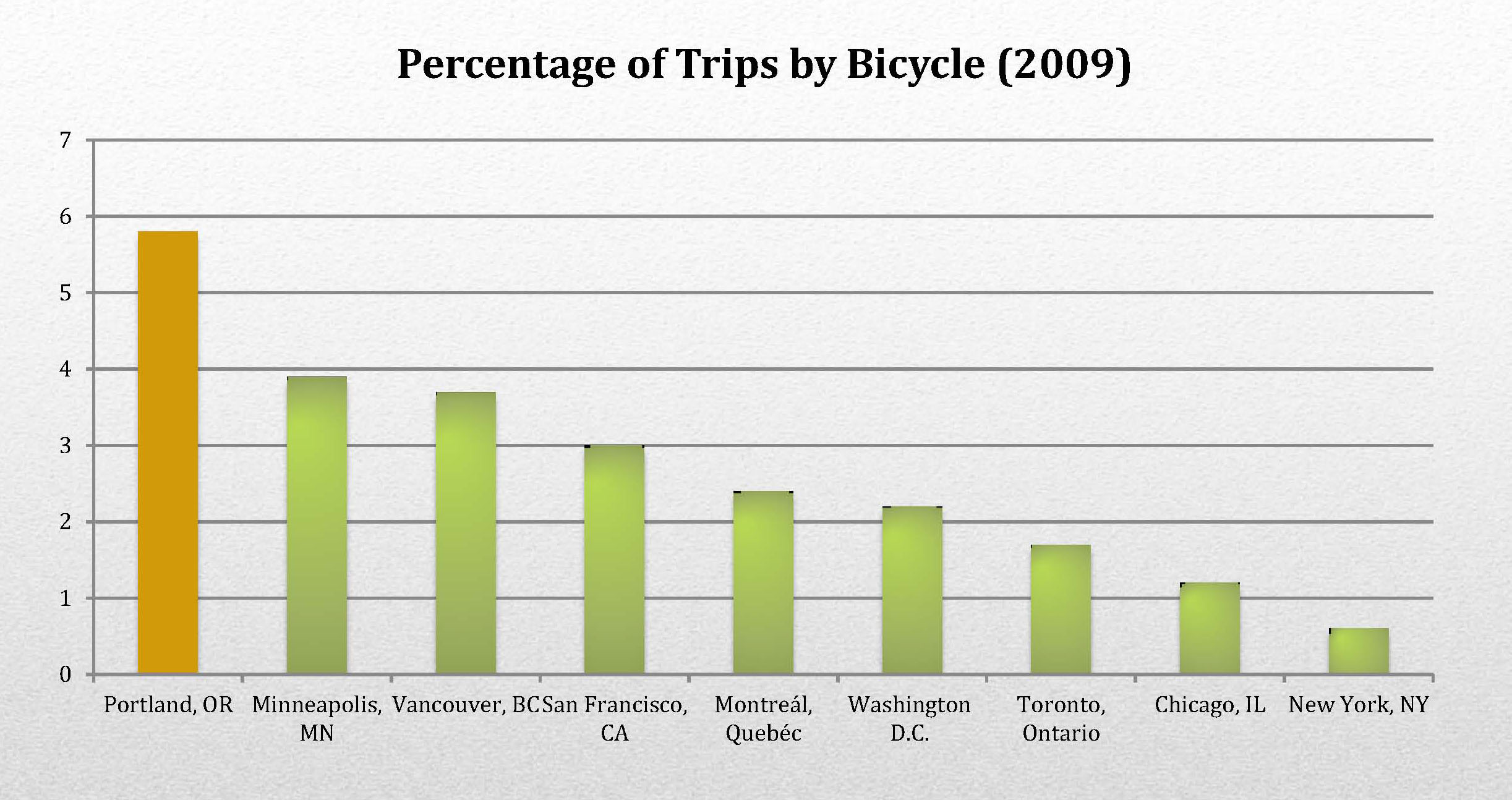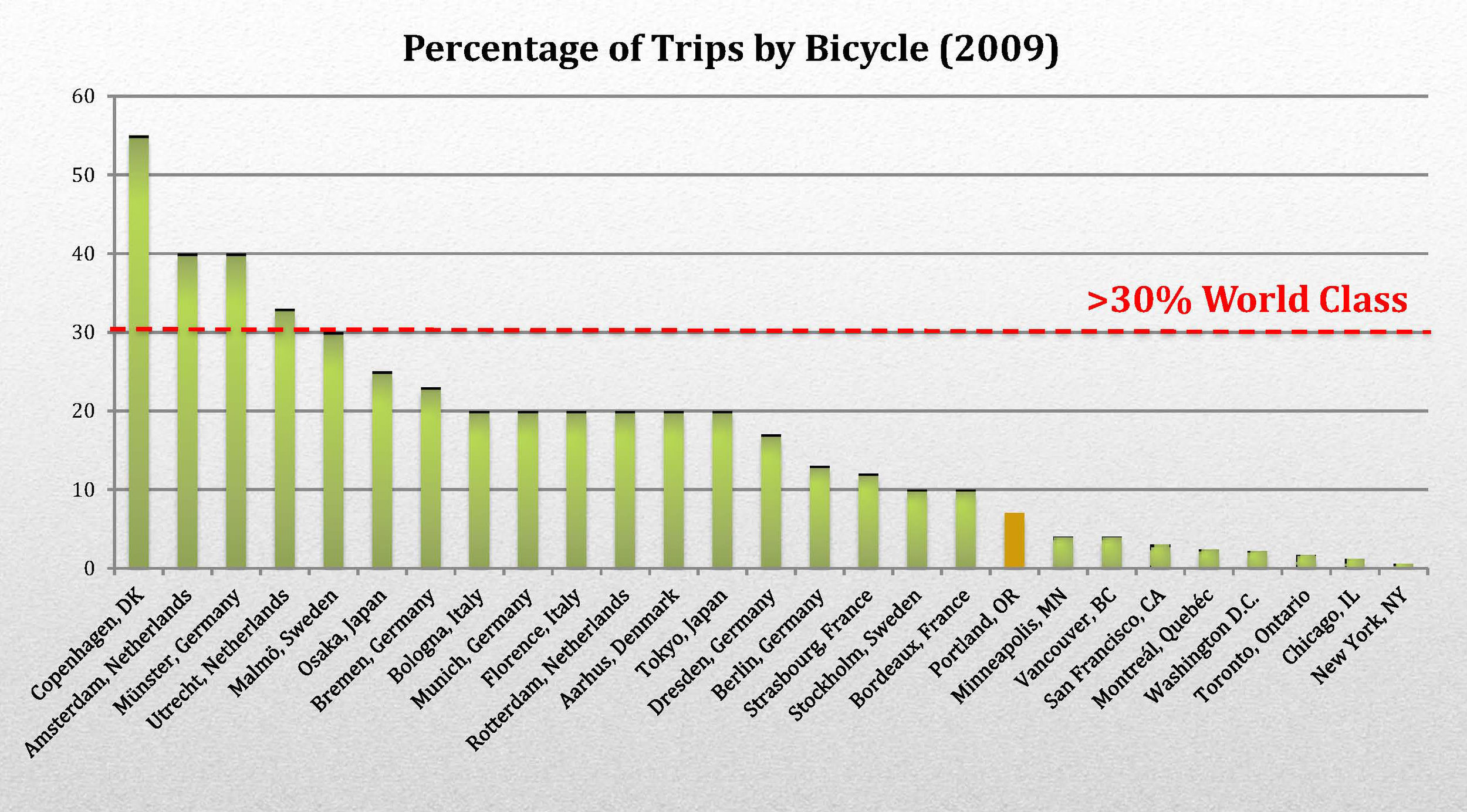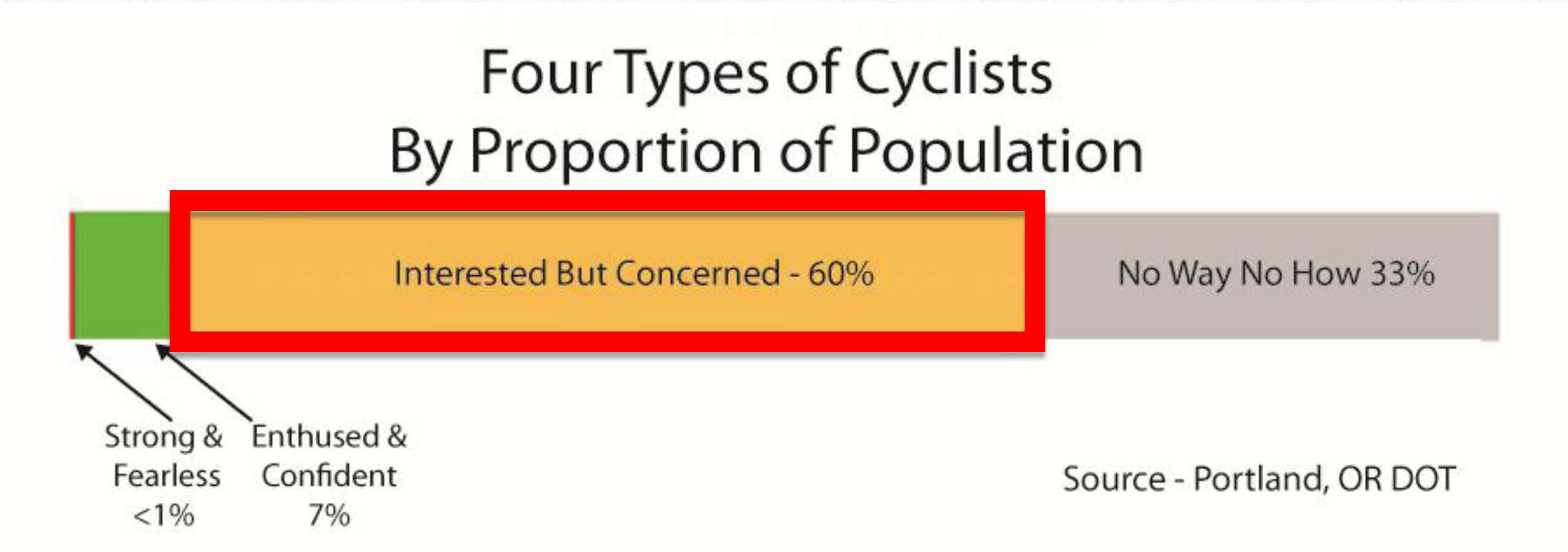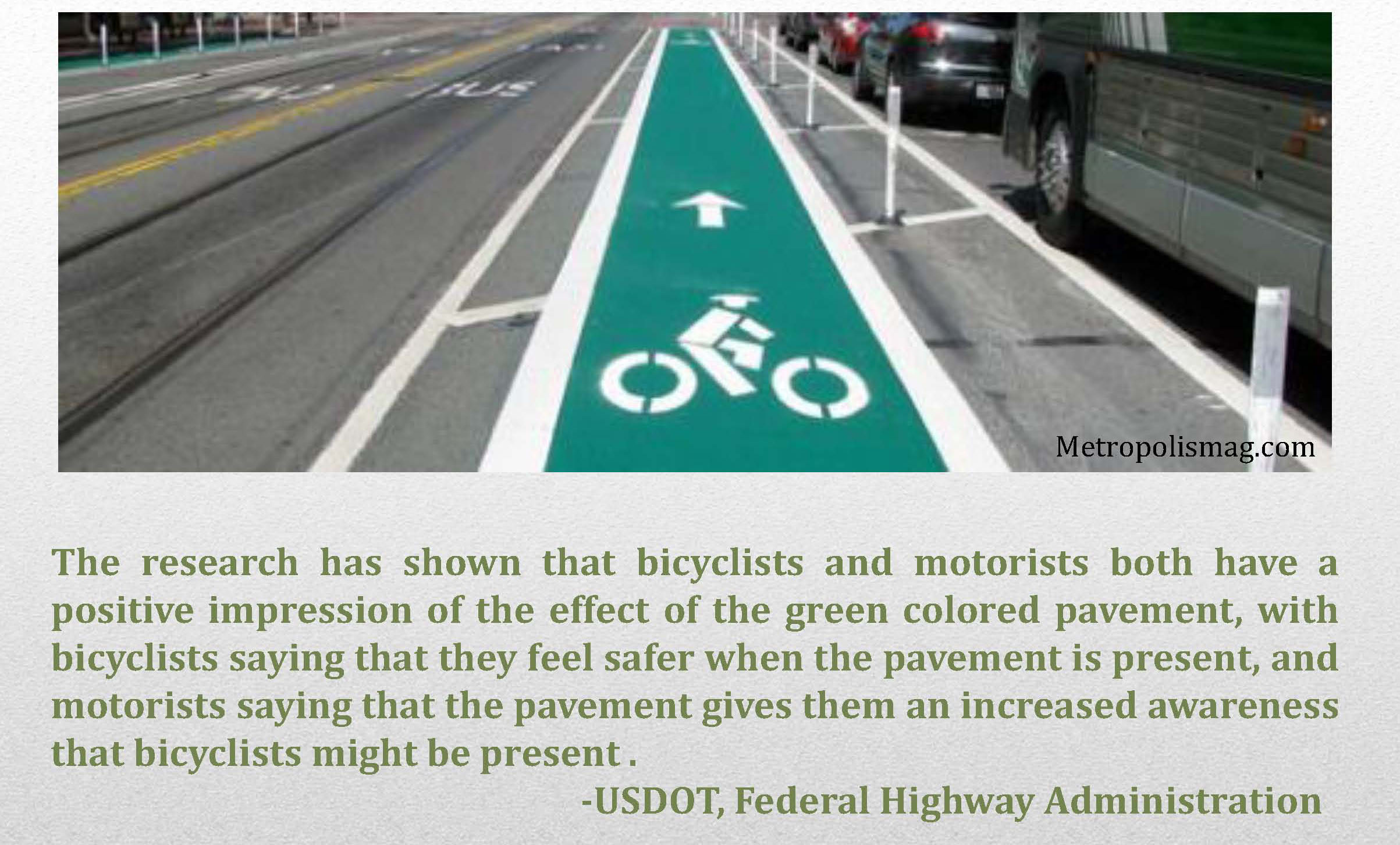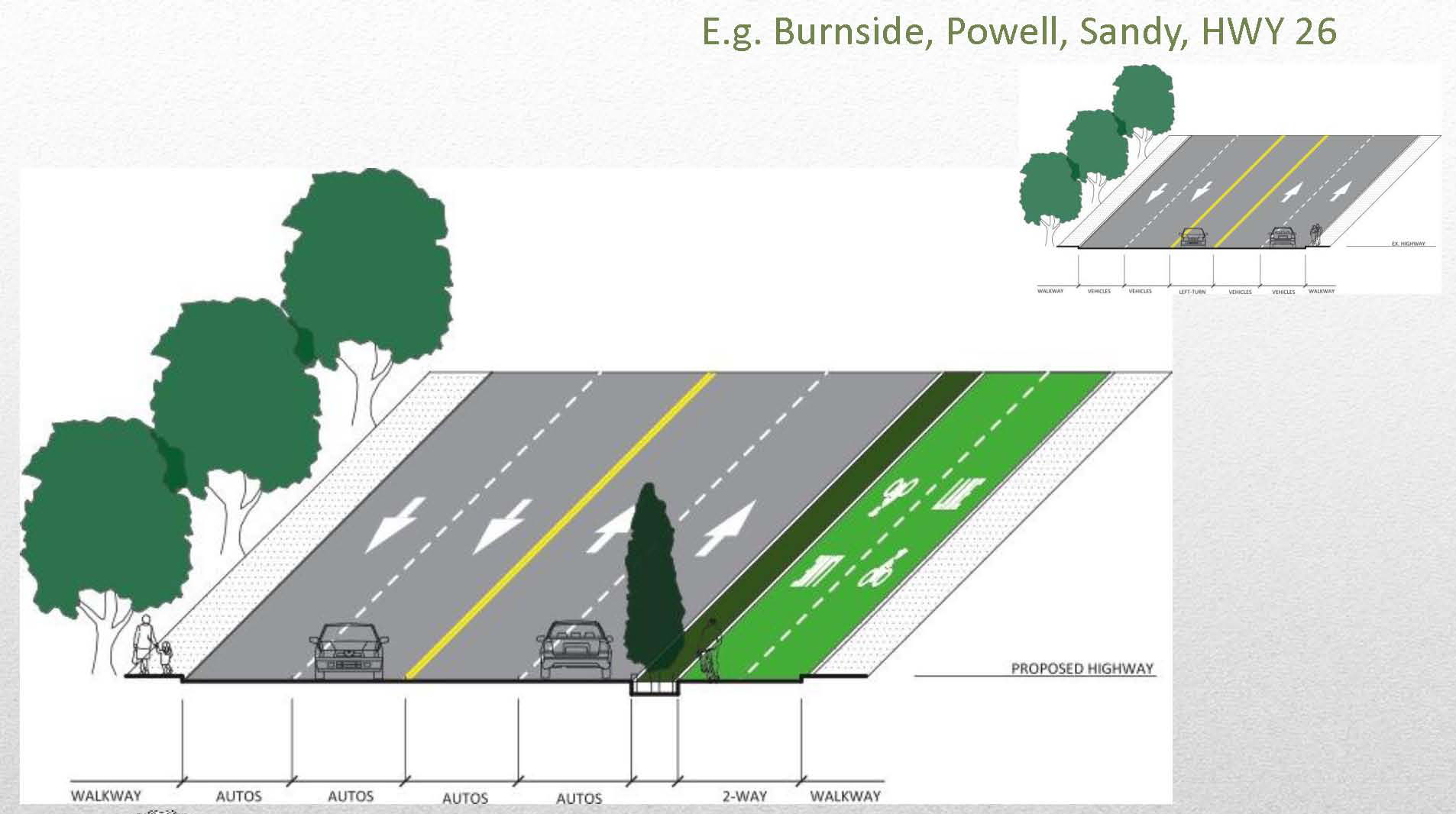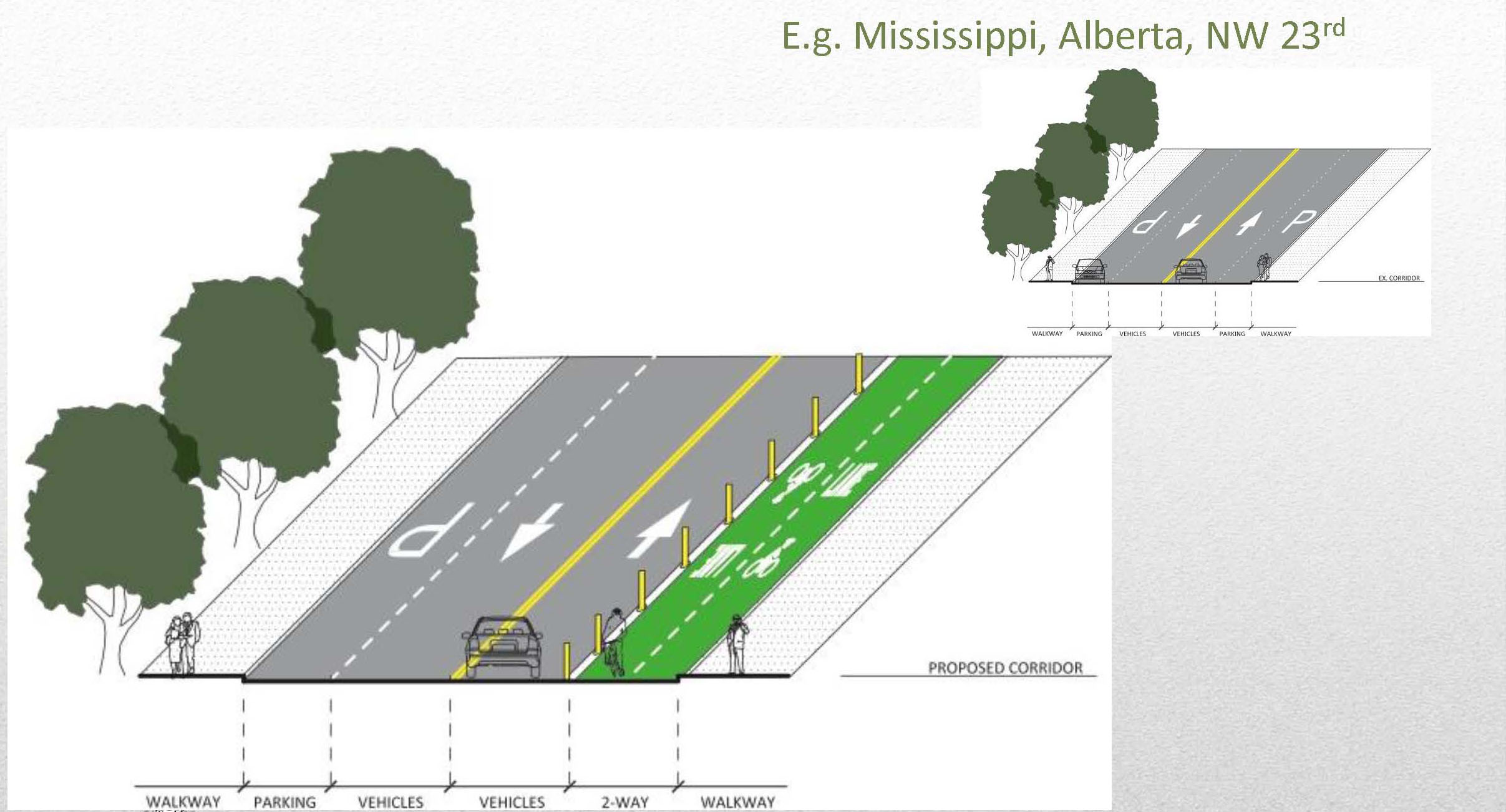GOOD Ideas for Portland: Cycling Infrastructure
[Originally written by Jason King, Allison Duncan and Katrina Johnston-Zimmerman] THINK.urban, recently completed the presentation of our various concepts for GOOD Ideas for Cities Portland. The team was one of six, which included Wieden+Kennedy, Ziba, Sincerely Interested, OMFGco, and ADXPortland, all tackling tough ideas. The THINK.urban concepts were developed alongside working alongside our urban leader, BikePortland.org founder Jonathan Maus, who presented the challenge:
 "Now it's time to do the big projects that present a challenge to politicians and the status quo, but that also present an exciting opportunity for the health of our city. But what we're missing is a a truly game-changing bikeway that connects a Portland neighborhood to the city center. How might we create a major new bikeway that helps make bicycling as visible, safe, convenient, and pleasant for as many people as possible?"
"Now it's time to do the big projects that present a challenge to politicians and the status quo, but that also present an exciting opportunity for the health of our city. But what we're missing is a a truly game-changing bikeway that connects a Portland neighborhood to the city center. How might we create a major new bikeway that helps make bicycling as visible, safe, convenient, and pleasant for as many people as possible?"
THE CONTEXT
Portland is a great city for cycling - and has a lot of great infrastructure and programs to support and grow ridership.
This gives us a ridership of almost 7% of commuters, which makes Portland the top large city in North America for ridership - (sorry Minneapolis)
The statistics are a bit different when compared to other cities around the globe, where Portland is way down on the list. Using some comparative metrics, we set the bar for 'World Class' at 30%, meaning if Portland is to truly become a world-class bicycling city, we need to expand significantly beyond our current level.
THE TARGET: INTERESTED BUT CONCERNED
For Portland to become 'World Class' we cannot keep doing the same things, but need to re-envision the infrastructure that make's bicycle a choice that is on-par with other modes of transportation. As seen in a much published graphic, we've already captured the 'Strong and Fearless' and have no worries about the 'Enthused and Confident'. What we need to target is the 60% of people who are interested in cycling, but concerned about safety, wayfinding, and other issues.
Looking at the research, we found there are three elements that are necessary to capture the 60% that are interested but concerned. A system has to have three elements, which are:
SAFE:
CONNECTED:
LEGIBLE:
THE SYSTEM: PDX LINK
To make a system that is Safe, Connected, and Legible - we looked at a variety of factors. One aspect of the system design included branding and system graphics, which were envisioned as a chain which evoked the idea of links - the system became a noun and a verb - PDX LINK - seen with the 'green' paint inside as well, which reflected the plans for the concept to increase wayfinding of bike routes.
 Another aspect was to incorporate the existing quadrant system, each acting as a link in the chain of PDX LINK. The radiating graphic below depicts the 5 quadrants, a play on geography that makes Portland a unique place to live. Each quad, including North, gets a unique color scheme, along with a simple 2 letter designation that is also incorporated into signage and other graphics.
Another aspect was to incorporate the existing quadrant system, each acting as a link in the chain of PDX LINK. The radiating graphic below depicts the 5 quadrants, a play on geography that makes Portland a unique place to live. Each quad, including North, gets a unique color scheme, along with a simple 2 letter designation that is also incorporated into signage and other graphics.
There was a conceptual mapping component as well including our proposal for two-way cycletracks on main routes, connected by the wayfinding based on quadrants - which is seen above. Each of these 'highways' would be located within 1 miles of all residents and businesses, and fed by a system of local streets.
Using Portland Streets as examples, we determined a specific typology of streets in a hierarchy, starting with the highways, and including the boulevards, corridors, and greenways as a complete system. A couple of examples of before and after sections show the change, and inclusion of a two-way, separated cycletrack that 'Takes the Lane' and creates a safe, connected, and legible system.
Starting with these major roadways, the further development of a hierarchy of bike routes, from major Highways and Boulevards, to less traveled Corridors and Greenways - nested inside one another for a complete system. A snapshot of a portion of downtown shows these designations.
The final piece was conceptual sketches - simple before and after graphics to showcase the new idea, on the street. We did a number of them connecting the Cully Neighborhood in Northeast Portland to the Downtown core, using no 'back street solutions'. The first starts on NE 57th, with a heavily vegetated buffer providing necessary separation from the traffic to ensure safety for riders.
 Before
Before
The second is located along East Burnside - where we are recoupling the one-way to include a two way bike route connected across to downtown.
 Before
Before
Another option is downtown, along SW Broadway, where the existing cycle-track was expanded near Portland State University. Note wayfinding and access to multiple modes of transportation throughout.
 Before
Before
We did many more graphics, which will get shared down the line. A few more 'after' shots include Sandy Boulevard and the Burnside Bridge. The opportunity to make 'cycling an everyday thing' offers the ability to go for a ride with your favorite dog, or stop by for some roadside bike-powered gelato, and take the whole family for a ride to the Saturday Market. A safe, connected and legible system can make Portland a world-class bike city.
Hopefully these images help in that effort.
> Check out a PDF of our presentation here, and stay tuned for the video to be posted at GOOD Ideas for Cities shortly.

